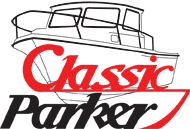Hello again,
I was wondering if someone could let me know why some 2520's have the cut transom and some have the engine on a bracket. Is there a performance gain from having one over the other?
What is the main reason some choose one set up over the other?
Thanks!
Robert
I was wondering if someone could let me know why some 2520's have the cut transom and some have the engine on a bracket. Is there a performance gain from having one over the other?
What is the main reason some choose one set up over the other?
Thanks!
Robert



























